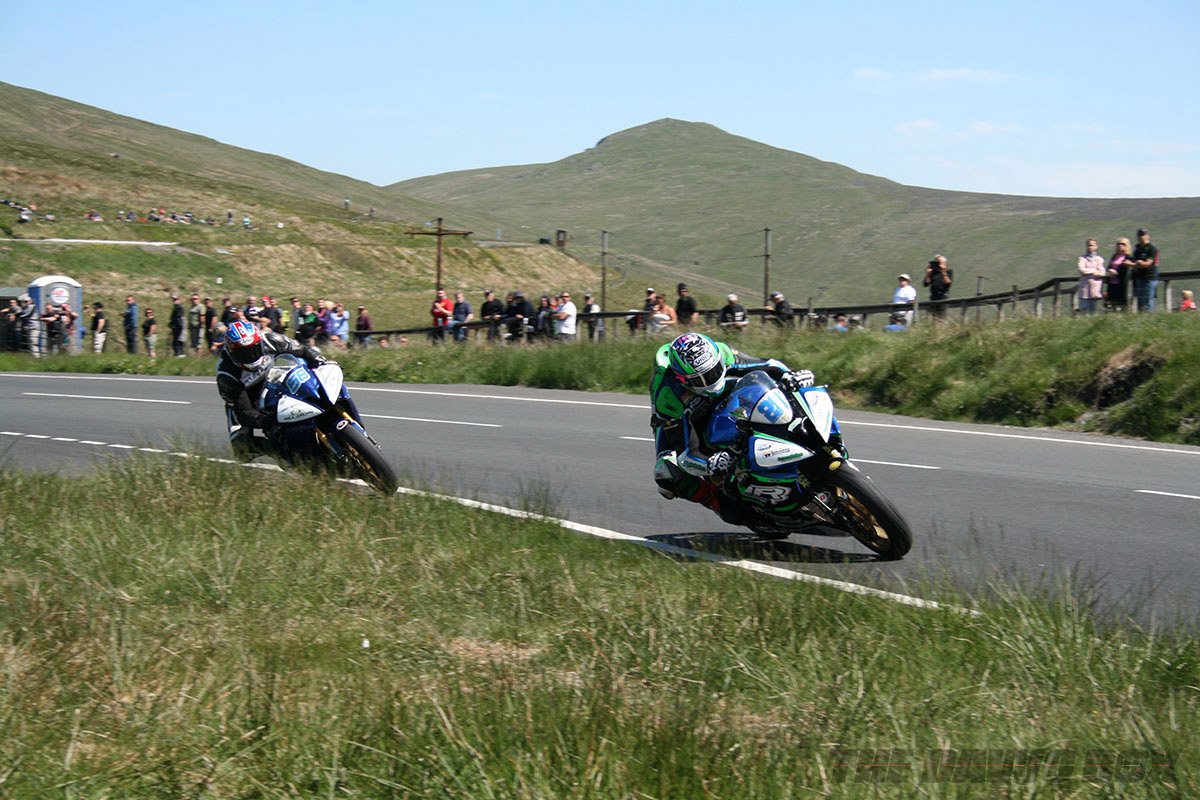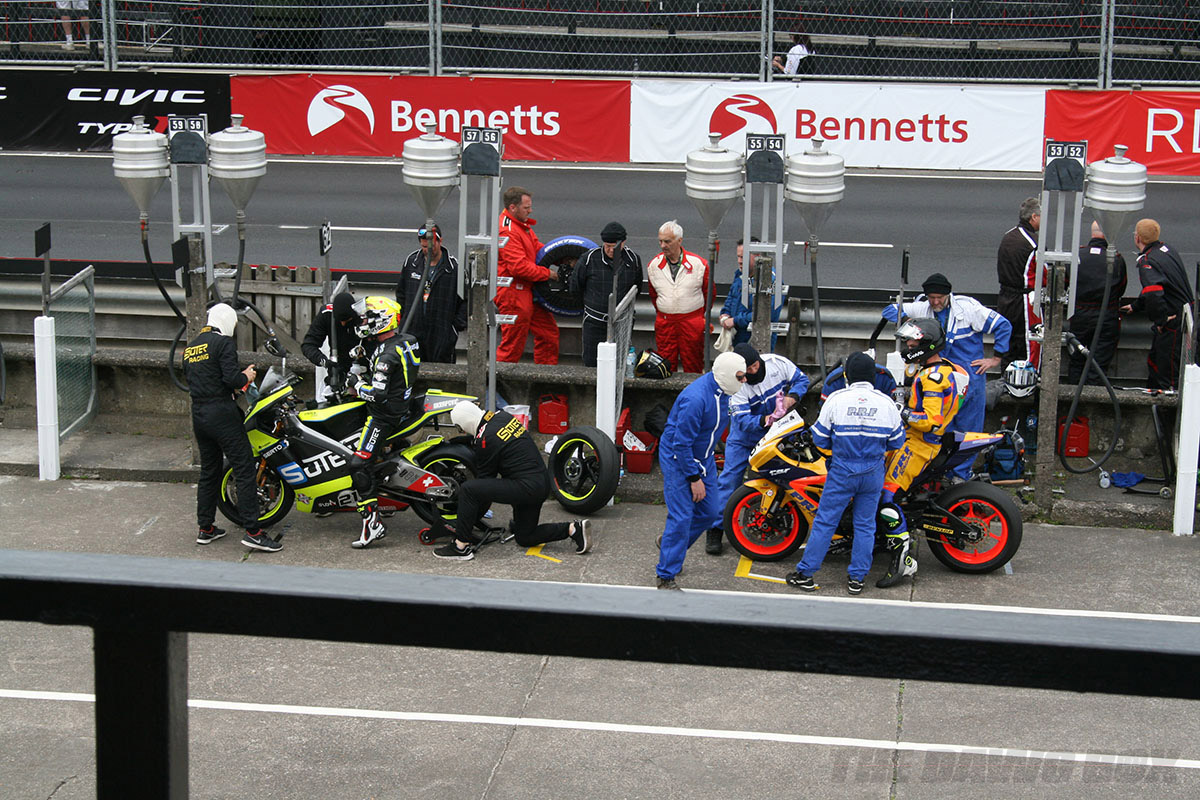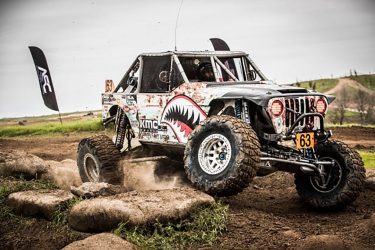Isle of Man TT

The hills were alive with the sound of motorcycles. So too were the towns, back alleys, and all corners of the Isle of Man. It was the first week of June 2018 and the races were in full swing.
The words “Isle of Man Tourist Trophy” conjure up images of motorcycles doing power wheelies down city streets past old Manx cottages and blasting full throttle over mountain passes. These images are usually accompanied with a starry-eyed response, “Someday I’ll go see the races.” Well, I finally had my day. I could rehash the statistics of each race, but instead here’s what I learned and experienced in total during my first trip to the IoM TT.

To many, the TT is the pinnacle of motorcycle road racing and I was certainly not alone to have a trip there placed prominently atop the “bucket list.” I decided it was finally time to stop dreaming and just book it. That is, book it a year in advance, as hotels and ferries sell out quickly. Approximately 45,000 race fans flock to the island where the regular population floats around 84,000. For my maiden European vacation, I flew into Manchester, UK and took a train to the port of Liverpool. From there, the ferry took me and a couple hundred motorcyclists across the glassy Irish Sea to Douglas, the islands capital and largest town. Being the start/finish of the TT course, the city of Douglas has the large grandstands, the paddock, the scoreboard, the crowds of people, and all kinds of nightlife.

My original plan upon arrival was to rent a bicycle to access the different vantage points along the race course, but the islands abundant public transport quickly proved itself. Buying one reasonably-priced “Go” card granted me access to island-wide busses, electric trains, and even a horse-drawn tram. (Unfortunately, I never got to ride the steam train. Next time!) This card was also quite useful for sightseeing on days the races weren’t running. As if the spectacle of the race isn’t enough, the island is full of that good ancient history with castles to explore West in Peel and South in the aptly named Castletown, plus the world’s largest operational waterwheel in the old mining town of Laxey. I quickly learned that the trick is to buy an official TT race pin from almost any of these destinations, with which access is granted to a wide variety of other sights and locations at no extra charge. It paid for itself.

Thanks to a lot of wishful thinking on my part, or maybe just good luck, we were treated with perfect weather for the duration. Fans and racers alike were fortunate because it was this weather that offered ideal track conditions to generate new records in every category – Superbike, Superstock, Supersport, Lightweight, Zero (electric) and Sidecar. It certainly seemed that every lap of every race all week long was a new record. Possibly the biggest news was Peter Hickmans new lap record of 135.452 mph aboard the Tyco BMW S1000RR, which also established the Isle of Man TT as the fastest road race in the world.

Maybe it goes without saying, but I do want to emphasize just how different the TT is in person as opposed to the condensed versions on television or youtube. The race categories are six, four, and one-lap affairs over the 37.73-mile Snaefell Mountain course, taking more time and with many more competitors than what is shown in the highlight reels. The longest of the races is just over 226 miles, but even the short Zero races have the same rider requirements of intense focus; assessing road and weather variables as they pass in a blur, all while dancing with a screaming motorcycle. Every upcoming corner must be known and anticipated all while still reacting to the corner preceding it. The physical and mental tasks at this speed leave little to no room for error. It’s almost unbelievable to watch and certainly difficult to distinguish between the beginning of a loss of control or someone who is still maintaining it, albeit on the very edge.

Although they’re gone in a flash, the vision lingers. For the solo competitors, the mental image is of both tires in the air, crossed-up handlebars, and some knees and a helmet bouncing off the gas tank. For the sidecar riders, it’s a sleek but brutal pounding as weight in the form of the passenger strategically positions his or herself for every feature of the course. Watching all racers and passengers control and recover from this wildly dynamic environment leaves one in awe.

With triumph comes tragedy and the TT has had its share over the years. It has been billed as the most dangerous motorsport event in the world. The island has now claimed 257 competitors in its century of TT and Grand Prix races as we sadly lost riders Dan Kneen and Adam Lyon this year. Facing these statistics is truly a testament to the bravery of the racers, the dangers they face, and the respect they deserve.
A spectators job is to stay out of the way. Don’t drop your drink or camera onto the race course and absolutely do not step foot out there while the road is closed. While that might mean you get locked into one view of the race, there are pedestrian bridges over the course at a few of the popular locations, and provisions regularly along the way through at least the southern stretches.

On the first day, a Saturday, I had a seat in the Douglas grandstands, actually a permanent brick fixture on the public road year-round. This race maintains some old charm. There are no flashy jumbotrons, the pits just in front are relatively quiet and minimalistic, and the leaderboard across the road is hand-painted and attended to by a group of scouts who keep busy running around to stay updated. Watching each rider start off from here and disappear over the horizon, I could only imagine what’s on their mind. Returning safely must be priority number one. The paddock behind the stands was easily accessible. Food and facilities were plentiful. You can experience a nice motorcycle race from here.

For Mondays viewing, I connected with a friend of a friend who had access to a private residence on the track. What a thrill that was, leaned on the old rock wall with a small group as the racers blazed a trail inches from your face. At one point I discovered that I was watching the races next to John McGuinness, practically Isle of Man TT royalty. McGuinness is the winningest living TT competitor, second in overall wins only to the late legend Joey Dunlop. Normally McGuinness would be racing here but he is still on the mend from a crash last year at the North West 200. As each bike in each race passed by, he would quietly identify the rider and comment to his family seated at his other side. He said riders passing this point were going about 180 mph. I won’t forget that experience for quite a while.

On Wednesday, I took the charming old electric train up Snaefell Mountain to the Bungalow with my camping chair over my shoulder. Just shy of the mountain peak, scenic views of puffy white sheep on distant green hills were readily apparent thanks to that perfect weather. Climbing a little higher to the summit allowed me to very faintly see Scotland. If I used a little imagination, I might even see Ireland, England, and Wales. They are indeed visible in the right conditions, but it was a little hazy in the distance. No problem. Practically anywhere around the Bungalow was a great spot to watch the race as there are several turns and a straight all within view, whether up on the hill or with your toes right at the track, both vantage points I investigated. When the television helicopter would rise up over the hills, it was a signal that the race leader would shortly come screaming into view.

For the final races on Friday, I posted up at the grandstands in front of Creg-ny-Baa. I got to see Mr. McGuinness again, this time waving to a cheering crowd on a pre-race parade lap aboard the Norton SG7, hands-down the nicest sounding combustion-engine bike of the whole event. I make the distinction because the electric Mugen of the Zero races had a very nice, unexpected howl as it scooted past. The Creg-ny-Baa corner is a slight downhill right and I was in the grandstands just past the outside of the apex. In hindsight, I didn’t need to sit right there as both sides offered nice long views on approach and departure. The races offer time to investigate optimal viewing locations and I found a nice secondary spot on a grassy wall on the approach side.
The 2018 TT ended with ample time for weekend travel for a sobering return to work early Monday morning. On my trip back, I was talking to a regular race visitor and we concluded that when I attend another TT, I should fly into Dublin and stay on the island in Peel. I left this trip with immense appreciation for the history of the island and a greater insight into what actually happens at the races that simply gets lost in the video editing room. This is a truly fantastic location and the race is like no other. It needs to be witnessed in person.





